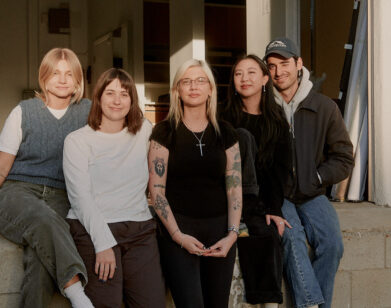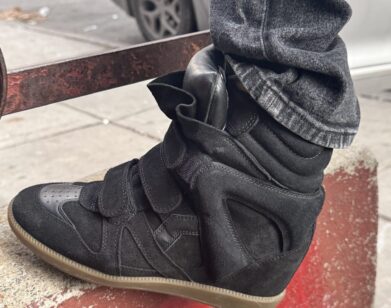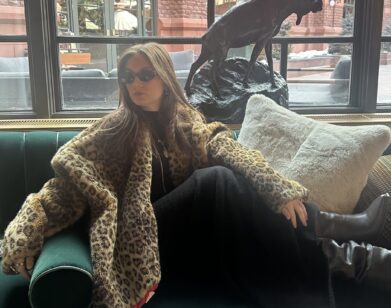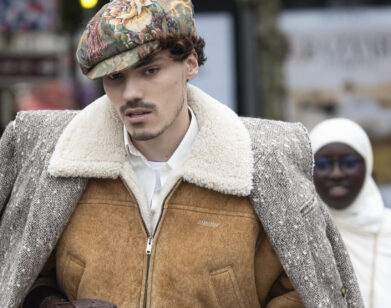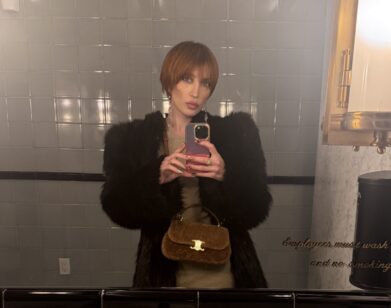Suzy Menkes
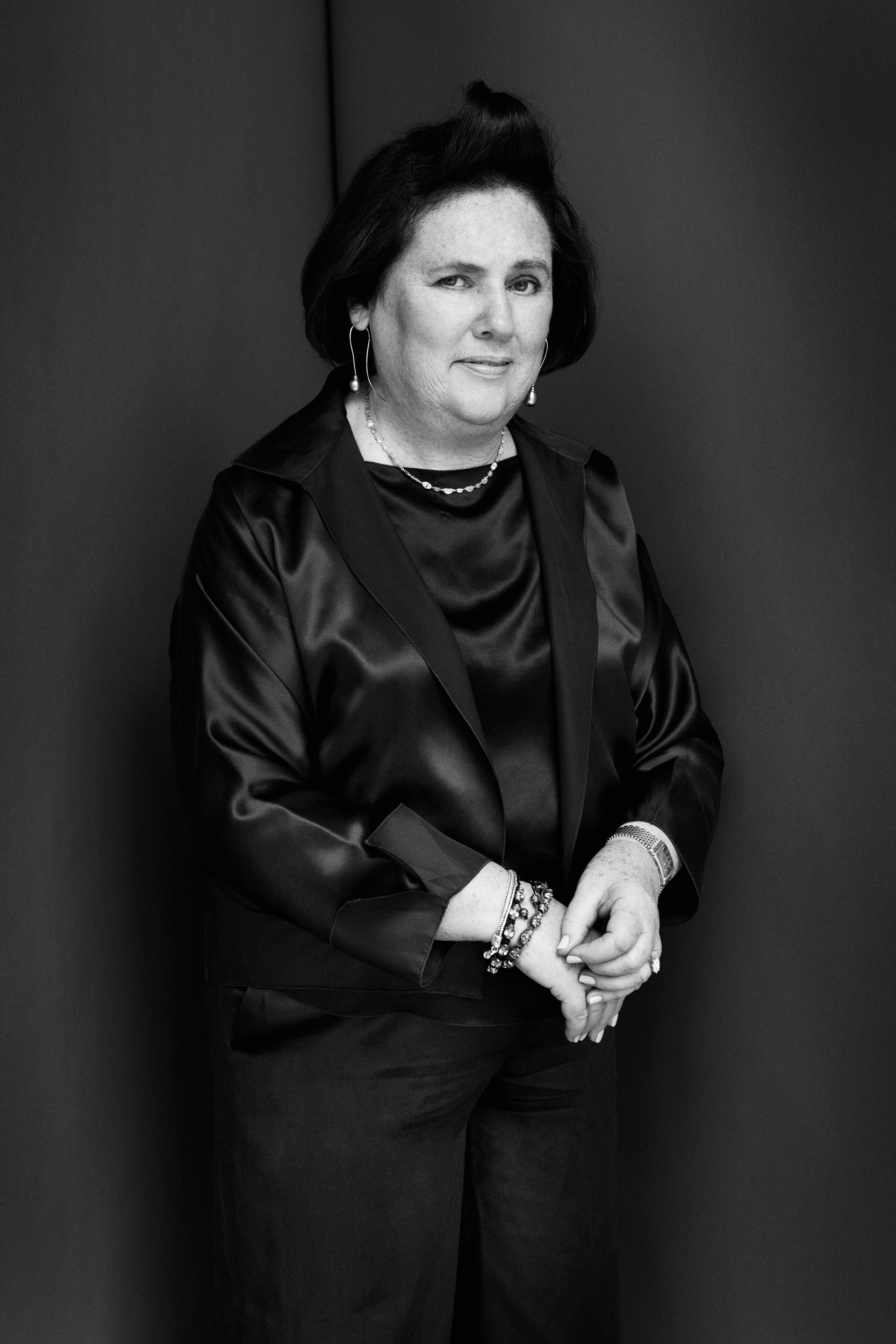
SUZY MENKES: Fashion Editor, International Herald Tribune HOME BASE: Paris. PROVENANCE: London and Brighton, England. PAST: After leaving Cambridge in 1966, joined The Times of London as a junior reporter; headhunted by Charles Wintour (father of Anna) who was then editor of the London Evening Standard; joined the Daily Express before returning to The Times; left The Times and joined The Independent in 1987; poached by the International Herald Tribune in 1988. WHAT SHE’D BE HAPPY TO SEE GO AWAY: “If those strapless red-carpet dresses do not leave the stage soon, I am going to go to the Oscars armed with a pair of stout scissors and cut them all up.”
STEPHEN MOOALLEM: Describe your first show.
SUZY MENKES: I was taken to my first fashion show—Nina Ricci haute couture—in Paris by the White Russian princess, down on her luck, whom I was boarding with in Paris in 1963. I was captivated by the glamour of the gilded salon, the elegant clothes, and the audience of grand ladies. But I was nearly thrown out because I did a little squiggle of a drawing of a hat in my diary. I was severly reprimanded—I can still feel my blushes on that day—because no image of a fashion show was allowed to be published for three months!
MOOALLEM: How did you think about writing about fashion in the beginning? How did you approach it?
MENKES: I admired the work of Prudence Glynn at the London Times. Eugenia Sheppard was already a legend, but I did not really think about “fashion” journalists. By contrast, I admired good journalism in general and also writing about the history of fashion—for example, Geoffrey Squire’s Dress Art and Society, which was published in 1974. At the Times, all journalists on every subject followed the same rules and were supposed to meet the same standards, so I never really thought about fashion writing as being in a bubble.
MOOALLEM: So what are you looking at when you look at clothes or at a collection?
MENKES: I have long said that a jacket with three arms is a dubious proposition unless we are all genetically modified to grow an extra arm! There has to be some element of wearability. Joseph Beuys can be an artist working in felt. But although fashion can be artistic, its form has to follow function. If I am looking at a designer who has been creating for 20 years or more—and now, this applies to those who were once gadflies and provocateurs, like the Japanese and the Belgians—then I try to look at the work as a long stream of creativity. I find some collections to be more vibrant than others, but the designers who last are those who are able to continue to be creative within the mold they have cast, usually right at the beginning of their careers. With a new designer—and it is so exciting when someone bursts on the scene—you feel a buzz about what they do and hope that this budding talent will flower. I would say that Christopher Kane, with his mix of sweet and dark spirit, is an example of an intriguing designer who has emerged in the last few years. What is different now in the digital world is that designers are exposed so quickly to a vast online world of praise and criticism, and are picked up so quickly by established designers—like Christopher Kane with Donatella Versace. By contrast, I cover men’s shows, so I saw Raf Simons right from the very beginning. But I think for many editors, he did not emerge until a decade later when he took over at Jil Sander. That trajectory, though, is impossible to imagine in the world of Twitter and blogging. So it is harder, as an editor, to watch the development of a career, when people are immediately shoved into the limelight. When I think of the long period when I saw Karl Lagerfeld’s work at Chloé and at Fendi before he joined Chanel . . . Well, that is impossible to imagine now.
MOOALLEM: What makes something good for you?
MENKES: The most powerful element is that a designer has to reflect the times. So often you can only sense a change, and not really understand until much later its significance. For example, the wide-shoulder thing. The public, if they registered it at all, saw the padded shoulders of Thierry Mugler and Claude Montana in the 1970s as a joke—”basketball players,” et cetera. Not until Joan Collins and the Dynasty era in the 1980s were those shoulders adopted by the masses, and only later still did the analysis translate the concept as women standing shoulder-to-padded-shoulder with men at work. Similarly, it is just impossible for any young woman today to imagine a world without pants—or that Nan Kempner had to take her trousers off and walk into a restaurant in just the matching jacket. I am not sure that I myself saw the revolution that Yves Saint Laurent brought at the time because it was done a lot in haute couture. It is now looking back, via Helmut Newton images, that it is easy to get it. So a fashion designer has to be relevant. There are many examples of fashion being ahead of a social change—from Vigée Le Brun’s paintings of Marie Antoinette without her carapace of monarchy to Coco Chanel foreseeing a new 21st-century woman. A designer also needs to have a personal vision—like Alber Elbaz at Lanvin, or John Galliano in his heyday—that is an artistic imprint to how they feel about fashion and about women. There are some designers who flash and burn—Courrèges is an example of that. But he still marked fashion history. And I don’t think that longevity is always a badge of honor. Modern brand management means that we are always celebrating birthdays, when what is exciting about fashion is innovation, not repetition.
MOOALLEM: How do you feel about the ever-increasing number of shows and seasons and the overall speed-up of things?
MENKES: I am not bothered about fashion’s speed-up. I find it quite exciting! And I think that the blogosphere has thrown up some interesting people—Susie Bubble is an example. But I am dispirited at how quickly the commodified and corporate fashion of today is winning back the control that was “lost” by the anarchy of the digital world. The control of Twitter by brands—with management teams sending out messages in the blogosphere, and all the controlling of images, and the travel payments to registered journalists and blogger journalists to cover events in places like China and Russia, all undermine the true spirit of journalism. I am sure a lot of this will settle down. But it has certainly made it harder for small experimental designers to build up their businesses. Also, from a journalistic point of view, it is obviously ridiculous to do long, descriptive paragraphs about clothes that anyone can see online. But then I never was one for the laundry list of clothes. I like to impart the atmosphere—because usually we still don’t hear the music or see much of the set online. But I am more in favor of an analysis.
MOOALLEM: So what surprises you now?
MENKES: Miuccia Prada’s collections are a constant surprise. At first, her “racing car” collection seemed so unexpected. Yet it aroused such a sense of joy with those prints and such desire for those crazy racing-car shoes. Miuccia mentioned to me six months later that one of her sons had taken up racing. And then when I said, “That explains your racing car collections,” she looked so genuinely surprised. That is what fashion creativity is about: elements of the unexpected born of the creative mind. But the importance is that they trigger an emotional response. Without that emotion and that desire, we would never buy anything new to fill our loaded closets.
For more on The Observers, click here.

